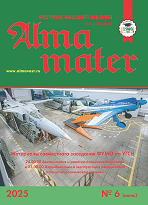UDC 308
https://doi.org/10.20339/AM.07-22.022
Dmitry V. Kataev, Dr. Sc. (Sociology), Professor of the Department of Sociology and Management at Lipetsk State Pedagogical P. Semenov-Tyan-Shansky University, e-mail: dmitrikataev@rambler.ru
Anton P. Volkov, Master of Sociology, Lipetsk State Pedagogical P. Semenov-Tyan-Shansky University, e-mail: anton_volkov_48_rus@mail.ru
The article is devoted to the theoretical and methodological aspects of the study of teacher migration. It is worth noting that in Russia, the migration of teachers has not become a separate topic for research. Based on the analysis of modern approaches to migration and mobility, the strengths and weaknesses of the research strategies of “mobile turn” and “attachment to place” are revealed, the heuristic possibilities of quantitative and qualitative methodology in the study of teacher migration are revealed. The purpose of the article is to provide a rationale and a conceptual basis for research on the migration of teachers and graduates of pedagogical universities. The article identifies the causes, forms and consequences of teacher migration, as well as key trends characteristic of modern labor migration processes in the educational space of the Russian school, using a specially developed narrative interview technique. The article talks about the need to apply a narrative approach to the analysis of the communicative form of narration. The method of narrative interview was used in the mobile methodology as a “strategy of mixing methods” Go along and Recovery of memories, to study the social experience of the teacher and collect information about the place, time and situational circumstances of his migration. Today, a number of studies are presented in which there are changes in the interpretations of the study of migration, and which form the basis for new theoretical approaches to the study of migration processes.
Keywords: teachers, narrative interviews, migration of teachers, mobile methods, causes of migration, forms of migration, consequences of migration.
References
- Eldyaeva, N.A., Kovanova, E.S. Driving forces and modern trends of internal labor migration of the population of the region. Modeling of the development of the socio-economic potential of the territory in the conditions of modern challenges. Materials of the international scientific and practical conference. Ulan Ude: East Siberian State University of Technology and Management, 2018. P. 81–85.
- Ter-Akopov, A.A., Maksimova, A.S. Youth Internal labor migration: current trends, factors and consequences. In: Youth work in the XXI century: challenges and opportunities. The dialogue of generations. Materials of the St. Petersburg International Youth Labor Forum. 2017. St. Petersburg: Publishing House of St. Petersburg State University, 2018. P. 176–180.
- Todaro, M. Internal migration in developing countries: an overview. Demographic and economic changes in developing countries. R. Isterlin (ed.). Chicago: University of Chicago Press, 1980. P. 443.
- Serdyukov, K.N. The main paradigms of the sociological approach to the study of migration processes (Part 1). Izv. Sarat. un-ta. Nov. ser. Ser. Sociology. Political science. 2018. Vol. 18. Iss. 3. P. 295–299. DOI: 10.18500/1818-9601- 2018-18-3-295-299.
- Giddens, E., Birdsall, K. (2005). Sociology. Moscow: URSS Publishing House, 2005.
- Beck, U. Risk Society: on the way to another modern. Moscow: Progress-Tradition, 1967.
- Bauman, Z. Liquid modernity. New York: John Wiley and Sons, 2013.
- Semenova, V.V., Chernysh, M.F., Sushko, P.E. (2019). Social mobility in an increasingly complex society: the objective and subjective aspects. Moscow: FNISTs RAN = SNITS RAS, 2019.
- Amita, i A., Van Houtte, M. Being pushed out of the career: Former teachers’ reasons for leaving the profession. Teaching and Teacher Education. 2022. Vol. 110. URL: https://doi.org/10.1016/j.tate.2021.103540
- Glazer, J. Tales out of school: Tracing perspective change through the stories of former teachers. Teaching and Teacher Education. 2020. Vol. 90. URL: https://doi.org/10.1016/j.tate.2020.103032
- Sacco, C., Falzetti, P. Spatial variations of school-level determinants of reading achievement in Italy. Large-scale Assessments in Education. 2021. Vol. 9. URL: https://largescaleassessmentsineducation.springeropen.com/articles/10.11...
- Rozhdestvenskaya, E.Yu. (2020). INTER-encyclopedia: narrative interview. Interaction. Interview. Interpretation. 2020. Vol. 12. No. 4. P. 114–127. URL: https://doi.org/10.19181/inter.2020.12.4.8
- Engelhardt M. Biographie und Identitaet. Die Rekonstruktion und Praesentation von Identitaet im muendlichen autobiographischen Erzaehlen. W. Sparn (ed.). Wer schreibt meine Lebensgeschichte? Biographie, Autobiographie, Hagiographie und ihre Entstehungszusammenhaenge. Guetersloh: Mohn. 1990. P. 197–247.
- Glazkov, K., Strelnikova, A. (2015). Mobile methods: movement as part of a research strategy. Interaction. Interview. Interpretation. 2015. Vol. 7. No. 10. P. 79–90.
- Di Masso A., Williams D.R., Raymond C.M., Buchecker M., Degenhardt B., Devine Wright P., Stedman R. Between fixities and flows: Navigating place attachments in an increasingly mobile world. Journal of Environmental Psychology. 2019. Vol. 61. P. 125–133.
- Polukhina, Е.V., Morgan, D. Integrating qualitative and quantitative methods: a pragmatic approach. SAGE Publications. Sociological research. 2014/2015. No. 6. P. 168–170.
- Trubina, E.G. The city in theory: experiments in understanding space. Moscow: New Literary Review, 2011.
- Schutze F. Autobiographical Accounts of War Experiences. An Outline for the Analysis of Topically Focused Autobiographical. Texts – Using the Example of the Robert Rasmus Account in Studs Terkel’s Book, ‘The Good War’. Qualitative Sociology Review. 2014. Vol. 10 (1). P. 224–283. DOI:10.18778/1733-8077.10.1.10











.png)






